Remembering the greatness of ‘The Godfather’ and ‘The Godfather part II’
The Godfather: Parts I and II was an unfavorable commentary on American society.The chronicle of the Corleones isn’t just an unflattering look at the Mafia; it’s also a commentary on the disappearance of an older, more intimate society and the rise of an impersonal, corporate-style capitalism, packed with lawyers and accountants arguing about mergers and acquisitions. Robert De Niro’s Vito Corleone in The Godfather: Part II is an Italian Robin Hood, acting on behalf of neighbors and friends victimized by primitive mobsters. However, his son Michael (played by Al Pacino) becomes a rational American businessman, grimly eliminating competitors.
“In fact, the family itself—which is the bond that holds all the characters together—ultimately crumbles by The Godfather: Part II,” Pells notes. “Michael throws his wife out of the house because she has aborted his next son. And he has his brother Fredo executed for inadvertently betraying the family. These themes revealed Coppola’s inner disenchantment with the course of American life in the 1970s, an opinion he shared with many members of his generation.”
For De Niro and Pacino, it was all in the family. Did you know that the role of Michael Corleone almost went to Robert De Niro? While Coppola ultimately settled on Pacino to portray the youngest and most ruthless Corleone son, De Niro would also be invited to join the family as the young Vito, a role for which he received an Academy Award for Best Supporting Actor.
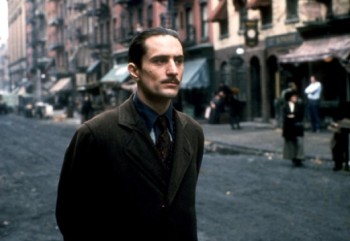 “De Niro and Pacino were both perfect choices to be cast in these films,” Pells comments. “Both were from Italian-American families. In particular, Pacino’s maternal grandparents came from—if you can believe it—Corleone, Sicily. Both actors also grew up in New York, backgrounds that undoubtedly influenced their performances in The Godfather saga.”
“De Niro and Pacino were both perfect choices to be cast in these films,” Pells comments. “Both were from Italian-American families. In particular, Pacino’s maternal grandparents came from—if you can believe it—Corleone, Sicily. Both actors also grew up in New York, backgrounds that undoubtedly influenced their performances in The Godfather saga.”
The Godfather gave Pacino the chance to work with his own personal “god.” You’d never know it to look at Al Pacino’s icy exterior as he portrayed ruthless Michael Corleone, but Pacino was extremely nervous to begin filming. When a friend asked him why, he replied that he was “acting with God”: Marlon Brando.
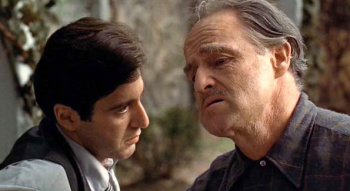 “Pacino, like others of his generation, had grown up watching Brando’s work,” Pells explains. “He had also studied Method acting, of which Brando was something of a father. Being given the opportunity to play Brando’s onscreen ‘son’ was a case of life imitating art. Although Brando was on screen in The Godfather for less than half the film, he dominated the movie not only because of his central role as Don Vito Corleone but also because of his ingenuity as an actor. Brando’s Godfather is a man to be respected and feared, as well as loved. Pacino was right: Brando was a god in the movie and a father figure for the other actors on the set.”
“Pacino, like others of his generation, had grown up watching Brando’s work,” Pells explains. “He had also studied Method acting, of which Brando was something of a father. Being given the opportunity to play Brando’s onscreen ‘son’ was a case of life imitating art. Although Brando was on screen in The Godfather for less than half the film, he dominated the movie not only because of his central role as Don Vito Corleone but also because of his ingenuity as an actor. Brando’s Godfather is a man to be respected and feared, as well as loved. Pacino was right: Brando was a god in the movie and a father figure for the other actors on the set.”
Part II proved that those who teach can also do. Before the filming of The Godfather: Part II, Al Pacino and Francis Ford Coppola were trying to decide who should play the part of the Jewish gangster Hyman Roth. At first, they approached Elia Kazan, who declined the role. Then they made an inspired choice, asking Lee Strasberg to play Roth. Strasberg had been training actors, including Pacino, for decades, but had very little acting experience himself. Now, at age 73, Strasberg had to disprove the saying, “Those who cannot do, teach.”
“Strasberg passed the test brilliantly,” Pells observes. “His performance—based on an accumulation of tiny internalized details, like the click in his throat that resembles a death rattle—was a vindication of Method acting, which he had taught for so long. For his performance, Strasberg received an Oscar nomination as Best Supporting Actor (though the award went to Robert De Niro as the young Vito Corleone).”
“In a very real way, the Corleone family became America’s family,” Pells concludes. “For 40 years, The Godfather: Parts I and II has entertained us, taught us lessons, made us laugh, and made us cry. It launched a generation of creative talents who have dominated the entertainment industry for decades, not to mention a film genre that remains quite popular. So let’s raise a glass to the 40th birthday of a saga that’s still as compelling and relevant as it was the day it was released.”
back to part 1








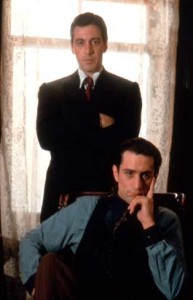

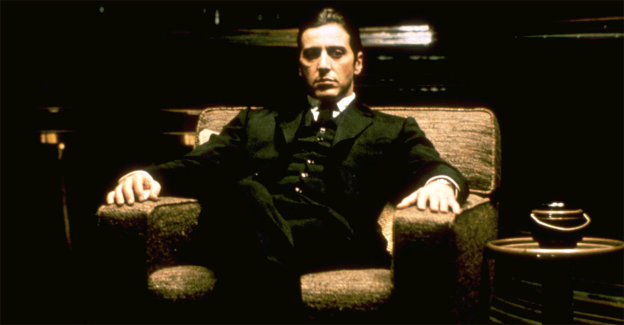
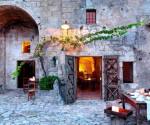

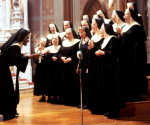
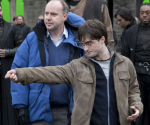



[…] 19 February, 2015 Breaking News > Movies, This Day in […]